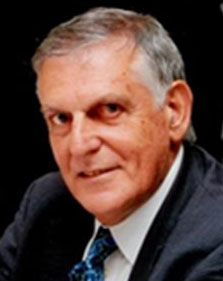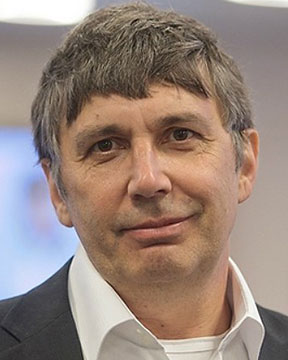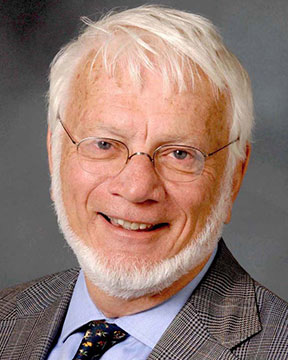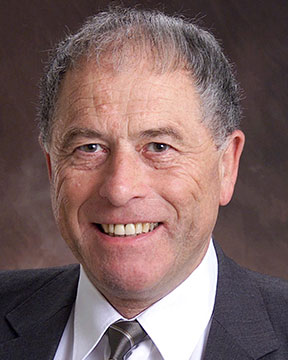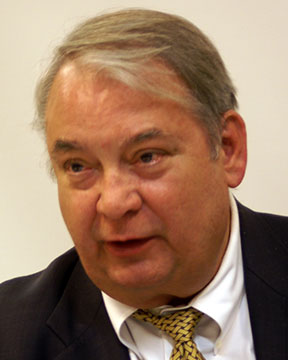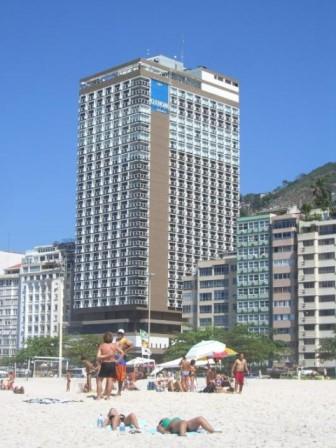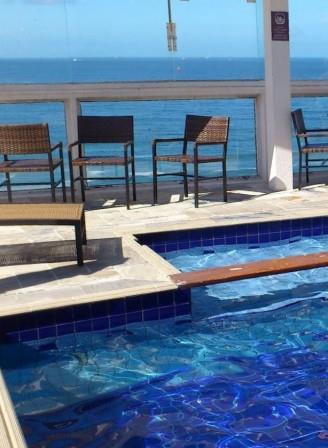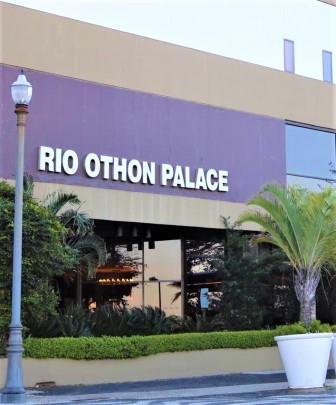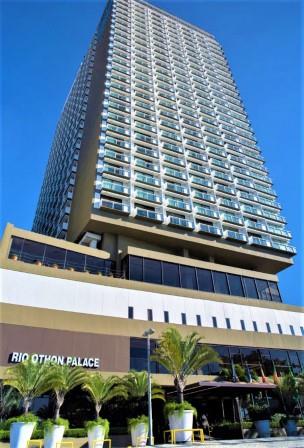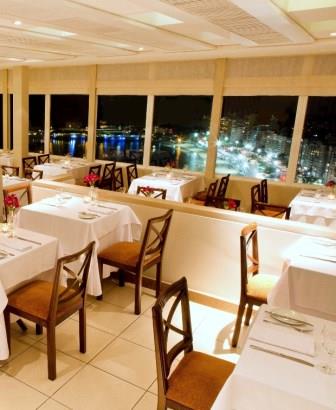ORALS
SESSION: IronMonPM1-R1
| Afonso International Symposium on Advanced Sustainable Iron and Steel Making(6th Intl. Symp. on Advanced Sustainable Iron and Steel Making) |
| Mon Nov, 5 2018 / Room: Mar Azul (50/1st) | |
| Session Chairs: Tateo Usui; Jose Carlos D Abreu; Session Monitor: TBA |
14:00: [IronMonPM105] Plenary
Characterization of Fine and Coarse Sludges of LD Peruvian Steelworks Mery-cecilia
Gomez Marroquin1 ; Kenny
Salazar
1 ; Jose Carlos
D Abreu
2 ;
1National University of Engineering, Lima, Peru;
2PUC-Rio, Rio de Janeiro, Brazil;
Paper Id: 134
[Abstract] Nowadays, one of the most important global issues in the steelmaking industry is the benefits of recycling or provision of the particulate wastes generated by blast furnaces, LD / BOF converters, and electric arc furnaces. Transportation costs, disposal in appropriate places, and increasing environmental constraints are demanding steel companies for ways to avoid, minimize, and / or properly treat their residues. Several solid residues in the form of slags, powders, and sludges emerge from reactor steel plants, such as blast furnaces, electric arc furnaces, converters, and Basic Oxygen /Linz Donawitz - LD. The chemical composition of these residues depends on the load fed to these reactors. This waste may contain: Fe, C, Ca, Zn, Pb and others hazardous elements, which can be reused in a sustainable manner [1]. The LD Oxygen Converter is the most common process for the production of steel in the world. Institutions, such as United States Geological Survey (USGS) and World Steel Association, noted that the Basic Oxygen Furnace LD/BOF produced 40% of the total steel from the USA (USGS, 2014) and 70% of the total steel produced in the world (World Steel Association, 2014) [2]. However, the production of steel through LD converters also generates a large amount of gaseous discharge of emissions which are collected through gas cleaning systems. This waste can be of two types: powders (dry material - BOF OG) and sludges (wet material - BOFS). The production of BOF OG can vary between 0.75 and 24 kg/tLS based on European Commission (Remus et al., 2013). The generation of BOF OG on average is 18 kg/tlS (American Iron and Steel Institute, 2001). In 2015, world steel production reached 78.8 thousand tons in the USA and 1620 million tons in the world (World Steel Association, 2016). According to information from the World Steel Association, in 2013, 626 thousand tons of BOF OG were generated only in USA and around 20 million tons worldwide[3]. In Brazil, about 80% of crude steel production comes from LD converters. In addition, this country had the great advantage of owing ore deposits with high iron contents and low contents of contaminants. In terms of environmental performance, LD steelmaking gas is very rich in CO, and is more suitable for the process of self-power generation. It is also necessary to develop other more noble ways of using LD steel slag, as well as the treatment of sludges and emissions containing powders [4]. In Peru, previous studies on characterization of sludges in LD steelworks have not been reported or published specifically in continuous form, as it had been with the characterization and treatment of electric arc furnace dusts (EAFD). This fact makes it novel and relevant, and through this complete characterization of both fine and coarse sludge samples of LD steelwork, this project will attempt to predetermine a sequence of carbothermic self-reduction treatments that may or may not add up to coal fines collected from other sources, in order to obtain high grades of iron metallization and controlled extraction/separation mainly in the form of vapor from metals such as zinc and lead [5, 6]. Therefore, the sludges of LD steelworks are important for their significant iron contents as well as its low phosphorus content, which can be reinserted into the production system for reuse [7]. Therefore, this waste accumulated by the Peruvian steel industry (especially the old sediments of LD converter) will tend to be reused in the steel plant itself, to give an added value to this material that until now is constituted as an environmental liability of considerable economic value. The experimental methodology in this work comprised the characterization of materials from a sludge site, mainly the coarse and fine sludges generated at a primary wet LD dedusting system. It is for this purpose, that the following were utilized: chemical analysis, Atomic Absorption, X-Ray Diffraction, Optical Microscopy-OM and Scanning Electron Microscopy-SEM, Scanning Thermal Analysis-STA, Differential Scanning Calorimeter-DSC, Thermogravimetric Analysis-TGA, Diferential Thermogravimetric Analysis-DTG, and physical properties such as specific gravity and average particle size. From these characterizations, the following technological routes were suggested: a) the production of coarse/fine residues composite briquettes, to be used as burden in ironmaking reactors; b) the production of coarse/fine self-reducing briquettes, complemented by a carbon resource in their composition, to be used as an alternative cooling material for the liquid steel temperature control and as burden in reactors demanding fast iron metallization.
References:
[1] Das B, Prakash S, Reddy PSR, Misra VN. An overview of utilization of slag and sludge from steel industries. Resources, Conservation and Recycling. 2007; 50: 40-57
[2] El Acero. Fabricacion y los procesos de transformacion en caliente. Available in: https://www.scribd.com/doc/98463629/Convertidor-Ld
[3] Naiyang Ma. Recycling of basic oxygen furnace steelmaking dust by in-process separation of zinc from the dust. Journal of Cleaner Production. 2016; 112: 4497-4504.
[4] Centro de Gestao e Estudos Estratagicos Siderurgia no Brasil 2010-2025. Serie de Documentos Tecnicos Novembro 2010. NA. 09 p. 53-54.
[5] Gomez-Marroquin, Mery C.; D'Abreu, J. C. Comparative Study of Zinc Ferrite and EAF Dust Reduction by CO-CO2 Mixture. SIPS 2016-Sustainable Industrial Processing Summit & Exhibition, Sanya-China 2016.
[6] Gomez-Marroquin, Mery C.; D'Abreu, J. C. Characterization of Peruvian Linz Donawitz-LD Steel Sludges. SIPS 2017-Sustainable Industrial Processing Summit & Exhibition, Cancun-Mexico 2017.
[7] D'Abreu, J. C.; Falero E.E.T, Kohler, H. M; Bentes, M. A. G.; Oliveira, L. F. R. Briquetes Autorredutores de Residuos da Siderurgia Integrada: Reducoes em Fase Salida e Liquida. In: 45 Seminario de Reduceo de Minerio de Ferro e Materias Primas. Abmweek-2015. Sao Paulo-Brasil, 2015.
SESSION: IronMonPM3-R1
| Afonso International Symposium on Advanced Sustainable Iron and Steel Making(6th Intl. Symp. on Advanced Sustainable Iron and Steel Making) |
| Mon Nov, 5 2018 / Room: Mar Azul (50/1st) | |
| Session Chairs: TBA Session Monitor: TBA |
17:40: [IronMonPM313] Plenary
Metallization and Carburization Kinetic in DR Shaft Furnaces Edelink Efrain
Tinoco Falero
1 ; Mauricio
Otaviano
2 ;
Jose Carlos
D Abreu1 ;
1PUC-Rio, Rio de Janeiro, Brazil;
2Samarco Mining Company, Ubu, Brazil;
Paper Id: 135
[Abstract] Presently, the production and consumption of DRI are continuously increasing, as a consequence of a specific condition of the NG market, generated for the economic impact assigned to the shale gas extraction technology. Considering this context, DRI can thus effectively improve the BF, EAF and LD converters' productivity and, consequently their competitiveness. In this work, the results of a cooperative research between PUC-Rio University and a Brazilian mining company are presented. Laboratory-scale simulation tests, using RD commercial pellets and typical industrial operational parameters of a bench market RD shaft furnace, were conducted and planned using statistical and factorial analysis. In the simulated experiments, the following three regions of the DR shaft furnace were considered: Reduction, Transition, and Cooling zones. Basically, three stages were considered in the research development: step one, which analyzed the reactions and equations concerning pellet metallization and carbon precipitation; step two, where the experiments focused essentially on the definition of the carburization kinetic equations occurring in the Transition and Cooling zones; and finally step three, which aimed to develop the "METCARB" computational program, conceived to mathematically simulate the metallization and carbon reactions along the height of the furnace. At last, an industrial case was presented in order to compare to the "METCARB" outputs.
References:
[1] Mamani Paco L.J. "Cinética da redução de pelotas de minério de ferro em condições simuladas de um reator Midrex"(MSc. Abstract, Pontifícia Universidade Católica; October 2010), 62-65.
[2] D'Abreu J.C., Kohler H.M., Rodrigues de Araujo D. "DRI Carburization in the Reduction Zone of a Shaft Furnace". (Samarco's Technical Seminar III: The Global Experience, Vitoria, Brazil 2008), 5.
[3] D'Abreu J.C., Vera, J. C., Kohler, H.M., Araujo, Contribution on DRI carburization Kinetics in the Reduction Zone of a Shaft Furnace Midrex Type. In: 15th Conferencia de Acería - Conferencia de Reducción, San Nicolás, Argentina. 5th Ironmaking Conference. San Nicolás: Argentine Institute of Metallurgy, 2005. v1. P.39-46.
[4] Belisario F, D'Abreu J.C., Otaviano M.M., Kohler H.M. "Simulação experimental da carburização de DRI em reator de cuba tipo Midrex". (40th Seminar of Iron ore and Raw Material Reduction 11th Brazilian Symposium on Iron Ore, Belo Horizonte-MG, September 2010).
[5] Turkdogan E.T, Vinters J.V. Catalytic effect of iron on decomposition of carbon monoxide. Part I. Metallurgical Transactions B, (vol 5, Jan 1974), 11-19.
[6] Towhidi N, Szekely J. The influence of carbon deposition on the reduction kinetics of commercial grade hematite pellets with CO, H2 and N2. Metallurgical Transactions B, (Vol. 14B, September 1983), 359-367.
[7] Szekely J., Tawil E.L. The reduction of hematite pellets with carbon monoxide- hydrogen mixtures. Metallurgical transactions B, (vol 7B, 1976), 490- 492.
[8] Szekely J, Choudhary M, Tawil E.L. On the reaction of solids with mixed gases, metallurgical transaction B, (vol 8B, 1975), 103.
[9] D'Abreu J.C, Kohler H.M, Tinoco Falero E.E. "Simulaceo Experimental e Modelamento Computacional da Metalização e Carburização simultâneas em Reatores RD de Cuba". Tese de Doutorado, Rio de Janeiro, Fevereiro 2016.
[10] D'Abreu J.C, Kolher H.M, Falero E.T, Otaviano M.M. (2015) on the simultaneous Iron Oxide Reduction and Carburization Kinetics, paper presented at the 144th TMS Annual Meeting, Orlando, Florida, 15- 19 March 2015
[11] D'Abreu J.C, Kolher H.M, Falero E.T, Otaviano M.M. (2015) Simultaneous metallization and DRI carburization kinetics in DR shaft furnaces, paper presented at the 7th International Conference on the Science and Technology of Ironmaking, ICSTI 2015, Cleveland Convention Center Cleveland; United States, 4- 7 May 2015


